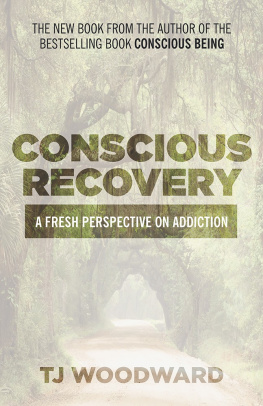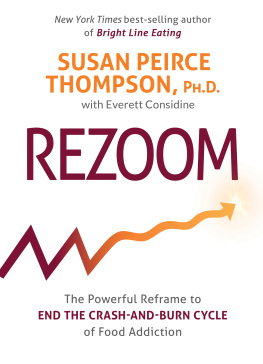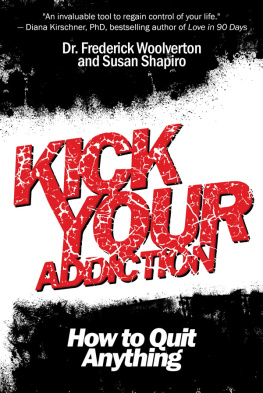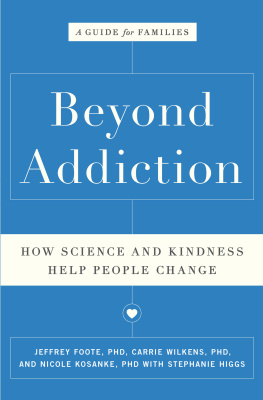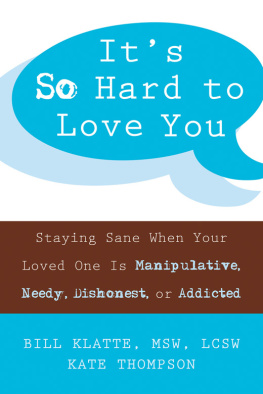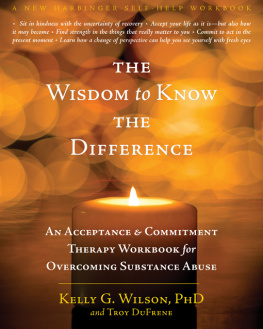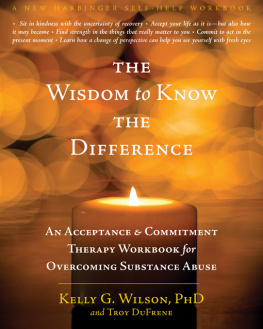Copyright 2005 by Susan Peabody
All rights reserved.
Published in the United States by Celestial Arts, an imprint of the Crown Publishing Group, a division of Random House, Inc., New York.
www.crownpublishing.com
www.tenspeed.com
Celestial Arts and the Celestial Arts colophon are registered trademarks of Random House, Inc.
Library of Congress Cataloging-in-Publication Data on file with the publisher.
eISBN: 978-0-307-81482-1
v3.1

TO MY FAMILY
Those who were;
Those who are; and
Those who are yet to be.
TO THE SEEKERS
Answer the door,
When you hear the knock.
It will be a faint sound,
Somewhere deep within your heart.
C ONTENTS
C HANGE IS TO HUMAN LIFE WHAT THE
METAMORPHOSIS IS TO THE CATERPILLAR; IT
IS THE INEVITABLE CYCLE OF LIFE. I F THERE
IS NO CHANGE, THERE IS NO LIFE .
J OURNAL E NTRY 2003
P REFACE
F or years I taught a self-help course called Addiction to Love. At the end of the class I always passed out a list of self-help books. Inevitably, at least one student would raise her hand and say, I have read most of these books and they dont help. I dont know what Im doing wrong. Speaking to these students after class, I often discovered that they were stuck because they didnt understand one fundamental truthour lives dont get better when we read a book or go to a class; our lives get better when we put forth the effort to change.
Is change important? Yes! It is a natural process from which we get a feeling of self-worth and well-being. Unfortunately, sometimes the natural process of changing gets interruptedusually because we are flung into survival mode by difficult circumstances. This was certainly true for me. By the time I was thirty-two years old, I had not grown emotionally or socially since my adolescence. My maturation had become fixated. I was a creature of habit, not a human being. I was lonely and out of control. I hurt others and I hurt myself. Yet, despite all the pain I was in, I was afraid to change. I was terrified of the unknown.
When my therapist asked what was holding me back from getting better, I said, Im afraid to get well. Mental health is unfamiliar. Its a mystery that lies beyond a closed door, and I have no peephole. That mystery feels like a beast ready to devour me if I open the door. What if getting better is worse than being sick? It can happen. Besides, I think Ive bonded to my vision of myself as a victim. I prefer self-pity to self-esteem.
This honest appraisal of myself was the beginning of my own personal transformation, which has culminated in this book. While it is meant to be a self-help book, it is also, in many respects, the story of my life.
Why have I written this book? I have written it because I love to teach. I only wish the woman I am today could reach back in time and teach the young woman I was. I would try to help her see what is so clear to me now. That change is important. That there is nothing to be afraid of. That dreams come true if we change. That it is never too late to change, and the sooner we get started, the easier it is to adjust to the changes we make. Most of all, that we are not alone as we make these changesthere are what Joseph Campbell calls invisible hands, which come to our aid when we are ready to change.
S USAN P EABODY
B ERKELEY 2004
I NTRODUCTION
T here are thousands of self-help books on the market. We have more information about the human psyche than ever before. This is the age of self-awareness. In addition, we now have a variety of solutions to our problems. Unlike the first generation of self-help books, any current psychology book worth its salt offers a recovery program that, if followed, will eliminate whatever problem we have.
Despite all of this information, many people still get stuck. They are unable to implement a recovery program. They either cant get started or they cant stick with it, and professionals have a hard time explaining this. We know that the inability to change has a lot to do with personality type, timing, childhood wounds, and the nature of the problem one has to change, but we still cannot completely analyze or explain why people get stuck. I think this is why the art of changing is such a neglected topic. Its a mysterious process, and no one really has any definitive answers as to how to get started and how to stay motivated.
While I dont have all the answers either, I do believe its time to focus more attention on changing because changing is the bridge between your problems and the solutions. It is your path to a better life.
In Alcoholics Anonymous, members like to say about themselves, Give us a rut and well furnish it. When I first heard this, I had to laugh and say to myself in a reverent way, Amen to that. If this little attempt at humor strikes a chord with you as wellread on.
A P ERSONAL
J OURNEY
Y ears ago, at the end of my last visit with my therapist, she turned to me and said, Susan, you have a great capacity to change. Then she gave me a hug and sent me on my way. At the time I thought: Is this it? Is this all she has to say at the end of a five-year relationship? Of course, later I came to realize that her comment was the highest compliment she could have paid me. After all, the ability to change is something that many people only dream about. It is a commodity often in short supply, and without it life can be anything from boring to tragic.
Soon after this, I began reflecting on the origins of my ability to change. I had not always had this ability. (Perhaps this is why my therapist felt it was important to acknowledge it.) Actually, for most of my life I had been a slave to habitto the point of being addicted to relationships, food, and alcohol. Some people thought I was hopeless. Then, one day, something shifted inside of me and I entered the world of the living. I began to change. I began to carve out a better life for myself.
How did I go from resisting change to embracing it? In a nutshell, I finally realized that I had to change or continue being miserable for the rest of my life. Once I decided I wanted to be happy instead of miserable (a big step for me), I looked at what was standing in my way and what I had to do about it. I looked at the rewards of changing and I faced my fears. I prayed and I acted. Before I knew it, changing became a new habit to replace the old habit of resisting change. I have been on a roll ever since, and writing this book is just another way for me to expedite more changes. For now, you see, I am intimate with the process of changing. It is my most cherished companion on this journey we call life.
A CTION
I f you listen closely when you unlock a safe, there comes a moment when you hear a click and the tumblers finally fall into place. You cant really see whats happening, but your fingers move and it all comes together. The beginning of change is like this. You do something different and finally something clicks. It is all very mysterious. You dont really understand it, but when it happens you know, you immediately open the safe and take out your valuables. In this case, the valuables locked up in the safe are all the wonderful things you will become when you change. And the key to all this is taking action. You dont just sit there and stare at the safe. You do something.


